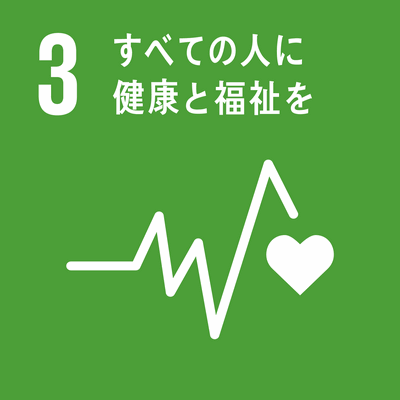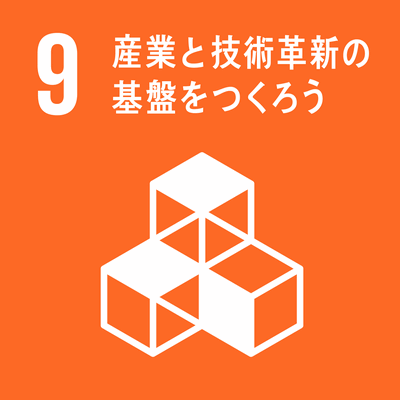シラバス表示
シラバスの詳細な内容を表示します。
→ 閉じる(シラバスの一覧にもどる)
科目の基本情報
| 開講年度 | 2024 年度 | |
|---|---|---|
| 開講区分 | 工学研究科(博士前期課程)分子素材工学専攻/応用化学専攻 | |
| 領域 | 主領域 : D; 副領域 : F | |
| 受講対象学生 |
大学院(修士課程・博士前期課程・専門職学位課程) : 1年次, 2年次 |
|
| 選択・必修 | ||
| 授業科目名 | 応用生物工学特論 | |
| おうようせいぶつこうがくとくろん | ||
| Applied Bioengineering | ||
| 単位数 | 2 単位 | |
| ナンバリングコード | EN-ORBI-5
|
|
| 開放科目 | 非開放科目 | |
| 開講学期 |
後期 |
|
| 開講時間 |
月曜日 3, 4時限 |
|
| 授業形態 |
対面授業 * 状況により変更される可能性があるので定期的に確認して下さい
「オンライン授業」・・・オンライン会議ツール等を利用して実施する同時双方向型の授業 |
|
| 開講場所 | ||
| 担当教員 | 湊元 幹太(工学研究科応用化学専攻) | |
| TSUMOTO, Kanta | ||
| SDGsの目標 |
|
|
| 連絡事項 | * 状況により変更される可能性があるので定期的に確認して下さい |
|
学修の目的と方法
| 授業の概要 | 生命科学は、生物学・化学・物理学に亘った学際的総合科学として発展してきている。本講義では、このような生命科学研究に必要な応用生物工学的知見を得るため、生化学・生物物理学・分子生物学の基本的な考え方を中心に、理解することをめざす。この特論では、生命体の構成物質(タンパク質や核酸などの生体高分子、脂質)の構造と性質を復習した後、主に遺伝子工学や分子生物工学を取り扱うための、生命機能の発現(遺伝子発現、シグナル伝達)の様式、生命科学の技術(遺伝子工学、生命情報学、顕微鏡技術)に関する、基礎的な事項に触れ、いくつかについては実験の実際を深く学ぶ。さらに、生命において重要な構造の「膜」については、やや深く論考し、サブミクロン(ナノメートル)~ミクロンレベルの柔らかな分子集合界面が、生命らしいかたちやはたらきが生み出される場となっていることを理解する。 (Course description/outline) Recently, life science has progressed based on integration of biological, chemical and physical sciences. In the course, to learn such knowledge, it is encouraged to understand fundamentals and principles of biochemistry, biophysics and molecular biology, including, e.g., functions, structures and properties of components of living organisms (biomacromolecules like protein and nucleic acid, lipid, etc.). It is also aimed to review typical mechanisms related to biofunctions of gene expression and signal transduction, and technology of gene engineering, bioinformatics, microscopy, etc., and to further understand the practical details of actual methods of the experiments. In addition, we would also like to see the nature of lipid membrane, which is one of the most important structure in living organisms, discussing the fact that such interfaces generated by softly molecular assembly in nano- to micro-meter dimensions can lead to emergence of assuming biomimetic morphologies and functions. |
|---|---|
| 学修の目的 | 生体高分子、遺伝子工学、生体膜の話題を中心に、生命化学に関する基礎知識を修得する。また、生命科学の実験技術に関する基本的、本質的な事柄を丁寧に見ていくことで、自分がふだん取り扱っている、主に遺伝子工学や分子生物工学といった、応用生物工学的な方法が機能する仕組みを理解することができるようになる。 (Learning objectives) It is aimed to mainly understand fundamentals of biological chemistry related to biomacromolecules, gene engineering, and biomembranes. By reviewing principles and important schemes of experimental techniques used very popularly, students can learn knowledge on some experimental apparatuses used in their own studies. |
| 学修の到達目標 | 生命の構造や、機能の発現において、さまざまな生体分子、その集合体が果たすそれぞれの役割に関する、おおまかなイメージをつかむことができるようになる。応用生物工学分野で一般的な生命科学の技術について、基本的な仕組みを理解できるようになる。 (Achievements) After completion of this course, attendees are expected to have learned knowledge on both characteristics of various biomolecules related to biological structures and functions and fundamentals of some experimental techniques used in life science. |
| ディプロマ・ポリシー |
|
| 成績評価方法と基準 | 出席50%、レポート50% (Grading policies and criteria) Grading is based on the evaluation of the presentations (50%) and the reports submitted (50%). |
| 授業の方法 | 講義 |
| 授業の特徴 |
Moodleを活用する授業 教員と学生のやり取りは日本語でも、英語による論文や教材の講読を含んだ授業 |
| 授業アンケート結果を受けての改善点 | 授業評価アンケートの結果や、学生との質疑を参考に内容の改善をはかる。 (Ideas for improving classes) The course will be improved based on the surveys by students. |
| 教科書 | 特になし (Textbooks) Not specified. |
| 参考書 | 遺伝子工学:基礎から応用まで(野島博 著 東京化学同人) 図解分子細胞生物学(浅島誠 駒崎伸二 著 裳華房) 分子生物学の基礎 第4版(G. M. Malacinski 著 川喜田正夫 訳 東京化学同人) 新版ビギナーのための微生物実験ラボガイド(中村聡 中島春紫 伊藤政博 道久則之 八波利恵 著 講談社) 基礎から学ぶ遺伝子工学 第3版(田村隆明 著 羊土社) Physical Biology of the Cell (Rob Phillips他 著 Garland Science) Membrane Structural Biology (Mary Luckey 著 Cambridge University Press) 生化学辞典 第4版(東京化学同人) 分子細胞生物学辞典 第2版(東京化学同人) そのほか、講義中に、適宜、紹介する。 (Reference materials) Physical Biology of the Cell (Rob Phillip, et al.) Membrane Structural Biology (Mary Luckey et al.) |
| オフィスアワー | 毎週月曜日、12:00~13:00、第1合同棟4階7408号室 (Office hour) If you have any question, please visit the Room 7408, Dai-ichi Godo-to bldg. during the lunch break from 12:00 to 13:00 (if possible) on the date when this course is open. |
| 受講要件 | 特になし (Prerequisites) Not required. |
| 予め履修が望ましい科目 | 特になし (Courses encouraged to be taken in advance) Not required. |
| 発展科目 | 生物機能化学特論、生物機能化学演習Ⅰ・Ⅱ、生物工学演習Ⅰ・Ⅱ (Advanced courses) Functional Biochemistry, Seminar in Functional Biochemistry, Seminar in Bioengineering |
| その他 |
英語対応授業である。 |
授業計画
| MoodleのコースURL |
|---|
| キーワード | 生物化学、生物物理学、分子生物学、遺伝子工学 |
|---|---|
| Key Word(s) | Biochemistry, Biophysics, Molecular Biology, Genetic Engineering |
| 学修内容 | 第1回~第15回 下記の内容を基本に講義する。 1. はじめに - 生命化学概観:歴史と課題、生体を構成する物質 2. 生体高分子の構造と機能:生体高分子の1次構造と高次構造、構造を安定化する相互作用 3. タンパク質の構造と機能:高次構造変化(折り畳み・変性)、高次構造と機能、フォールディングの理論、細胞でのフォールディング、細胞での様態(膜タンパク質と可溶性タンパク質) 4. タンパク質の構造と機能:酵素活性、会合と解離、リガンド—受容体の結合、協同的な結合・解離、Macromolecular crowding 5. 核酸の高次構造:融解、Naked DNAの凝縮・脱凝縮、染色体の凝縮・脱凝縮、クロマチン構造と遺伝子活性 6. 遺伝子発現と遺伝子工学:複製・転写・翻訳の基本機構、組換え遺伝子操作・法令、遺伝子解析技術、ゲノム(遺伝子)編集 7. 組換えタンパク質産生技術:原核細胞、真核細胞(酵母、昆虫、哺乳類)、セルフリーシステム 8. 生体膜(Biomembrane)の基礎知識:細胞膜のモデル(流動モザイクモデル)、脂質2分子膜、人工脂質膜小胞(Liposome)、生体膜構成分子Phospholipid(リン脂質)およびCholesterol(コレステロール)の構造、臨界パッキングパラメーター、非リン脂質型合成膜構成分子、相構造(ゲル、液晶)、ミクロ相分離とミクロドメイン(ラフト様ドメイン)、拡散(膜の流動性)、膜透過・膜損傷、膜融合 9. 細胞膜の特性:膜タンパク質の分類・発現、細胞膜の動的挙動(分裂、融合、陥入、出芽、突起)、不均一構造(脂質ラフト)、細胞内(およびオルガネラ)に見られる膜構造と役割、膜タンパク質の再構成:プロテオリポソームとその作製法(界面活性剤除去法、凍結融解法、超音波法、組込み法、膜融合法、組換えバキュロウイルスを用いる方法) 10. シグナル伝達と細胞運動:細胞内情報伝達とその応答、運動・形態変化(分裂、変形、走性) 11. 解析技術・実験環境:構造解析(結晶解析、NMR)、電子顕微鏡、光学顕微鏡、光操作技術、生物情報学(データベース、解析ツール)、バイオリソースの利用 12. 生命システム再構成の試み:無細胞発現系、人工細胞モデル、構成的生物学 (Course contents) Divided into 15 sessions, the following will be lectured: 1. Introduction: Molecular components in living organisms reviewed from a historical aspect 2. Structures and functions of biomacromolecules: Primary and higher-ordered conformation of biopolymers, intermolecular interaction to stabilize conformation of biopolymers 3. Structures and functions of proteins: Conformational changes (folding, denaturation); three dimensional structures and functions, folding in cells, types of proteins (transmembrane and soluble proteins) 4. Structures and functions of proteins: Enzymatic function, association and dissociation, ligand-receptor interaction, cooperative binding and dissociation, macromolecular crowding 5. Higher-ordered structures of nucleic acids: Melting, folding and unfolding of naked DNAs, condensation and decondensation of chromosomes, chromatin structures and the gene expression activity 6. Gene expression and gene engineering: Fundamentals of the central dogma (duplication, transcription, and translation), experiments with recombinant genes, technology for gene analysis, gene editing 7. Production of recombinant protein: Gene expression systems based on bacteria, eukaryotes (yeast, insect, mammal cells), and cell-free extracts 8. Fundamentals of biomembranes: Models of cell membranes (the fluid mosaic model), lipid bilayer; artificial lipid vesicles (liposomes), phospholipids and cholesterol, the critical packing parameter, non-phospholipid type components to form bilayers, phase structure (gel, liquid crystalline), micro phase segregation and microdomains (raft-like domains), diffusion on membranes (fluidity of membranes), permeation and damage of membranes, membrane fusion 9. Characteristics of cell membranes: classification of membrane proteins, expression of membrane protein, dynamics of cell membranes (division, fusion, invagination, budding, protrusion), inhomogeneous structure (lipid raft), roles and functions of intracellular membranes and organelles, reconstitution of membrane proteins (methods for proteoliposome preparation) 10. Cell signal transduction and motility: signal transduction and the responses, changes in motility and morphology 11. Experimental tools: microscopy, optical manipulation, bioinformatics, open bioresources 12.Attempts to reconstitute biosystems: Cell-free gene expression, artificial cell model, synthetic biology 13.Concluding the course. |
| 事前・事後学修の内容 | 講義内容に関連した文献で、自分の研究にとっても興味深いものを読み、理解を深める。文献調査の内容を、レポート課題に含める。 (Contents for pre and post studies) Students are encouraged to read additional related articles before the class. The submission of the reports related to the latest articles of students’ interest is mandatory. |
| 事前学修の時間:120分/回 事後学修の時間:120分/回 |

